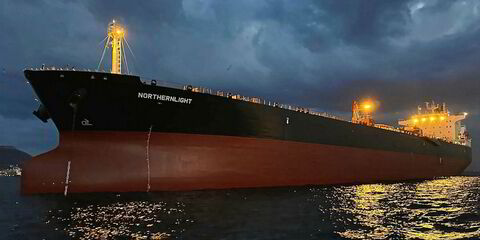The Baltic Dry Index reached a new yearly high today as rates on smaller dry bulk ships powered the latest movement.
The rise indicates better market fundamentals, says Pioneer Marine chief executive Pankaj Khanna. But with more ship deliveries in the first quarter and the seasonal slowdown in China demand, he cautions that the market sentiment should not get too ahead of itself.
"The seasonality in the market is not going away,” Khanna said.
The BDI reached 1084, up from 1065 yesterday and the third day in a row where the index has settled above 1000. The BDI last reached those levels in August 2015.
Rates on smaller ships are powering the index as capesize rates take a breather. The Baltic’s assessment on average time charter rates for panamax vessels rose 9% to $9,272 per day. Rates on supramax and handysize ships showed smaller gains for the day.
Among reported panamax time charter were the 84,867-dwt SBI Rumba (built 2015) to Vattenfall for $11,500 per day for intra-Asia trading. The 80,904-dwt Navios Amber (built 2015) went Uniper for $15,000 per day for redelivery at Gibraltar-Skaw. The 75,200-dwt Amalfi (built 2009) went to CHS for $7,750 per day for Pacific Northwest-to-Asia transit.
Coking coal prices hitting highs.
Panaj Khanna, chief executive of Pioneer Marine, says the strength in capesizes rates is cascading down to smaller ships as as charterers decide to split cargoes. But he also points to better demand across dry bulk commodities.
Demand for coal, one of the primary cargoes for the panamax fleet, is driving much of the gains in panamax rates. Coking coal prices out of Australia are up around $300 per tonne, compared to $213 per tonne a month earlier.
Earlier this year, China imposed restrictions on the operating days of the nation’s coal mines as part of a broad restructuring of the industry. Limiting the output has forced the country to rely more on imports. Khanna says coal imports into China are up 9% from a year ago levels.
“The cargo side is leading the market up,” Khanna said. With increasing coal imports to China, “that has taken out all panamax and supramax tonnage.”
He also pointed to strong exports from the North American and Black Sea grain markets during this harvest year. While those seasons are hitting their peak and are likely to plateau, Australia’s grain export season is just starting to pick up, which will also keep vessel supply tight.
While he does say the supply and demand balance for dry bulk shipping is coming into better balance, it’s still early to call for a full recovery, Khanna cautions.
Shipyards are deferring deliveries in November and December as owners seek to subtract a year from vessel age. Those deliveries will likely accelerate in the first quarter at the same time as demand weakens due to China’s lunar new year.
“Newbuilding supply will pick up in the first quarter after yards have delayed delivery of ships," Khanna said. "So you will have a double whammy of excess new supply as demand goes down.”


